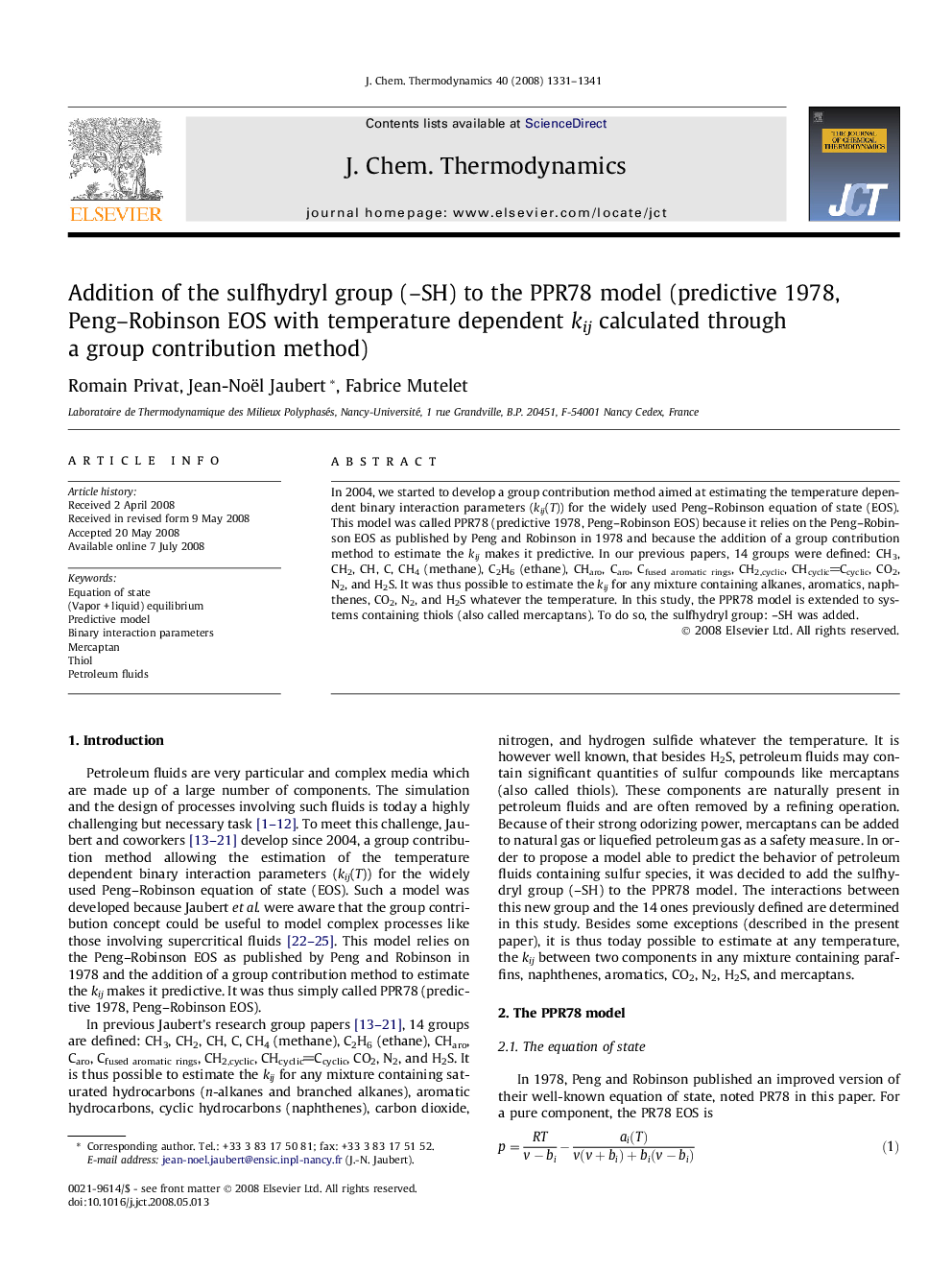| Article ID | Journal | Published Year | Pages | File Type |
|---|---|---|---|---|
| 217115 | The Journal of Chemical Thermodynamics | 2008 | 11 Pages |
In 2004, we started to develop a group contribution method aimed at estimating the temperature dependent binary interaction parameters (kij(T)) for the widely used Peng–Robinson equation of state (EOS). This model was called PPR78 (predictive 1978, Peng–Robinson EOS) because it relies on the Peng–Robinson EOS as published by Peng and Robinson in 1978 and because the addition of a group contribution method to estimate the kij makes it predictive. In our previous papers, 14 groups were defined: CH3, CH2, CH, C, CH4 (methane), C2H6 (ethane), CHaro, Caro, Cfused aromatic rings, CH2,cyclic, CHcyclicCcyclic, CO2, N2, and H2S. It was thus possible to estimate the kij for any mixture containing alkanes, aromatics, naphthenes, CO2, N2, and H2S whatever the temperature. In this study, the PPR78 model is extended to systems containing thiols (also called mercaptans). To do so, the sulfhydryl group: –SH was added.
